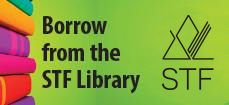Students will develop their abilities to view, listen to, read, comprehend, and respond to a variety of contemporary and traditional grade-level-appropriate texts in a variey of forms (oral, print and other media) from First Nations, Metis, and other cultures for a variety of purposes including for learning, interest, and enjoyment.
CR
|
|
| View, listen to, read, comprehend, and respond to a variety of texts that address identity (e.g., Growing Up), social responsibility (e.g., Going the Distance), and efficacy (e.g., Making Our Community More Peaceful). |
|
|
| Select and use appropriate strategies to construct meaning before (e.g., considering what they know and need to know about topic), during (e.g., making connections to prior knowledge and experiences), and after (e.g., drawing conclusions) viewing, listening, and reading. |
|
|
|
Use pragmatic (e.g., function and purpose of texts), textual (e.g., form/genre, sequence of ideas), syntactic (e.g., word order and emphasis on particular words), semantic/lexical/ morphological (e.g., capture particular aspect of intended meaning), graphophonic (e.g., sound-symbol patterns and relationships), and other cues (e.g., the speaker's non-verbal cues) to construct and confirm meaning. NOTE: Italicized text refers to those indicators that are emphasized at this grade level. |
|
|
| View, respond, and demonstrate comprehension of visual and multimedia grade-appropriate texts including traditional and contemporary texts from First Nations, Métis, and other cultures containing special features (e.g., the visual components of magazines, newspapers, websites, comic books, broadcast media, video, and advertising). |
|
|
| Listen purposefully to understand, respond, and analyze oral information and ideas from a range of texts including narratives, instructions, oral explanations and reports, and opinions. |
|
|
| Read and demonstrate comprehension and interpretation of grade-appropriate texts including traditional and contemporary prose fiction, poetry, and plays from First Nations, Métis, and other cultures. |
|
|
| Read independently and demonstrate comprehension of a variety of information texts with some specialized language including grade level instructional materials, non-fiction books, reports and articles from magazines and journals, reference materials, and written instructions. |
|
|
| Read grade 6 appropriate texts to increase fluency (120-160 wcpm orally; 160-210 silently) and expression. |















